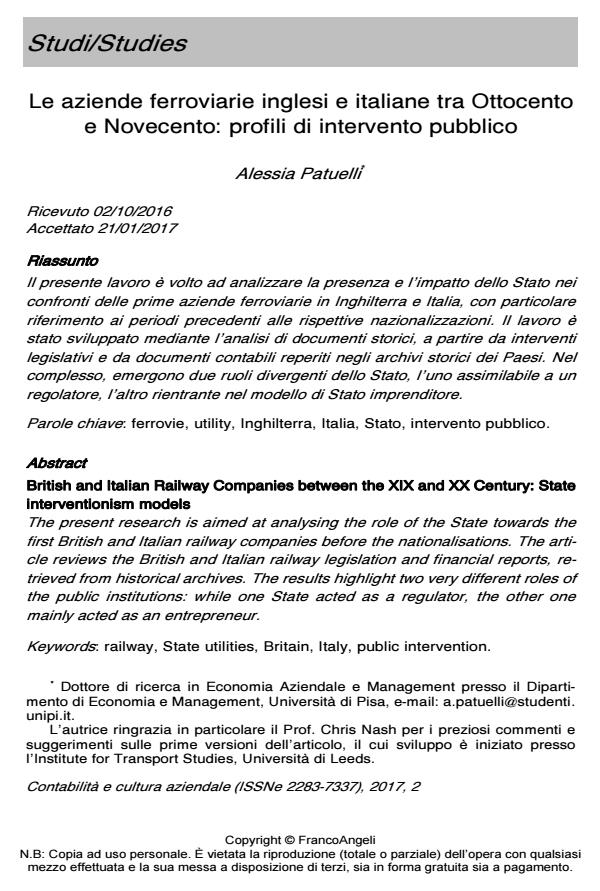British and Italian Railway Companies between the XIX and XX Century: State interventionism models
Journal title CONTABILITÀ E CULTURA AZIENDALE
Author/s Alessia Patuelli
Publishing Year 2017 Issue 2017/2
Language Italian Pages 36 P. 7-42 File size 523 KB
DOI 10.3280/CCA2017-002002
DOI is like a bar code for intellectual property: to have more infomation
click here
Below, you can see the article first page
If you want to buy this article in PDF format, you can do it, following the instructions to buy download credits

FrancoAngeli is member of Publishers International Linking Association, Inc (PILA), a not-for-profit association which run the CrossRef service enabling links to and from online scholarly content.
The present research is aimed at analysing the role of the State towards the first British and Italian railway companies before the nationalisations. The article reviews the British and Italian railway legislation and financial reports, retrieved from historical archives. The results highlight two very different roles of the public institutions: while one State acted as a regulator, the other one mainly acted as an entrepreneur.
Keywords: Railway, State utilities, Britain, Italy, public intervention.
Alessia Patuelli, Le aziende ferroviarie inglesi e italiane tra Ottocento e Novecento: profili di intervento pubblico in "CONTABILITÀ E CULTURA AZIENDALE" 2/2017, pp 7-42, DOI: 10.3280/CCA2017-002002